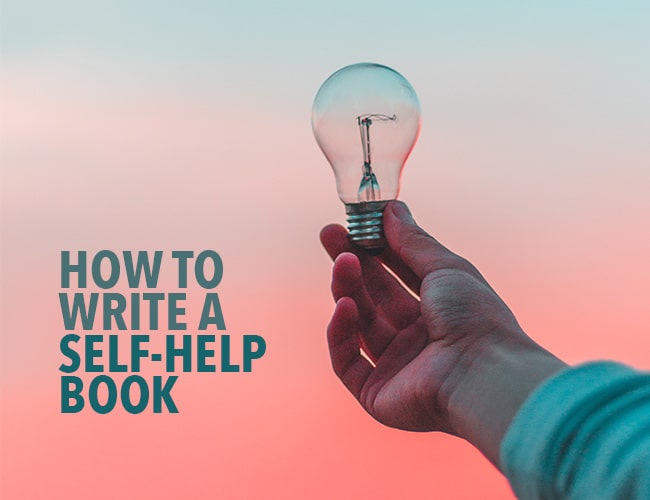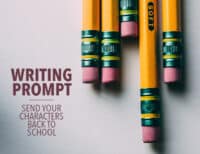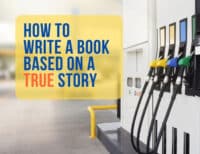Do you want to help people? Do you feel a calling to use your writing to be a voice of encouragement to others? Do you want to know how to write a self-help book that will share your stories and wisdom with thousands of readers?

Thanks to the unique life that you've lived, only you have access to the treasure trove of experience and knowledge in your heart and mind. Within that trove are lessons that readers need to learn, and only you can teach them.
That's why it's important to know how to write a self-help book: so you can make a difference in people's lives by teaching with the right balance of authority and honesty.
Want to learn how to write a book from start to finish? Check out How to Write a Book: The Complete Guide.
How to Write a Self-Help Book
They key to a powerful self-help book is, as I've said, balance. Your job, as the teacher, is to earn your reader's trust, and then teach the reader valuable and immediately applicable lessons.
To earn trust, you must be vulnerable. Honest. Humble.
That means being willing to admit to your reader that you have probably failed at the very things you are teaching. If you present yourself as infallible, then readers won't be able to trust you. You have to lead from a humble posture.
Then, you need to teach lessons that are immediately usable. Your job as a helpful teacher is to “chunk,” to break into small parts, the steps to success in your self-help book. This means a lot of planning will be required as you analyze the process you are attempting to teach.
Let's get started!
Tell Stories of Growth
The primary structure of a great self-help book is a series of growth stories. What is a growth story?
A Growth Story is a narrative in which you, the “guru,” experience failure, learning, and success.
This three-part structure is an excellent framework for each chapter of your book, and will draw the reader into each concept you intend to teach.
First, begin with a story of failure. If you are unwilling to share stories of your own failures, then you will not gain the trust of skeptical readers.
Second, explain what you learned as a result of the failure. Make sure the principle is tangible and easily applicable to your reader’s life.
And third, show how you recovered from the failure and found success. This, of course, is the part that your readers will be most interested in. But it can’t work without the previous two steps. Without the humble beginning, you can’t achieve the proud finale.
Teach, Then Motivate
While your chapters should be framed with growth stories, they need to teach concrete strategies and truths that readers can immediately apply to their lives.
Too often, a self-help book will be rich with platitudes, or memorable thoughts about the nature of life. But when put down, there is little about the book that is doable.
For each chapter, give the reader one clear task. Don’t overwhelm readers with too many things, or you will likely lose several of them (though you can have an “additional reading” section at the end, perhaps, for those who want more).
Stick to a simple, straight-forward item that each reader can add to his or her to-do list and start working. Whether it's for weight loss, parenting, relationships, quilting, or deep sea diving, you will need to make sure each step that you teach is something the reader can go and do today.
Once you've taught the achievable basics, then add your big ideas or platitudes to give the principle muscle.
Recruit Other Voices
On your quest to help other people, it can be tempting to feel like you’re all alone. Part of this is good: You’re approaching a problem from your own unique perspective, offering the help to those who need it.
But part of it is bad, too: Rarely can one single person have all the solutions to any single problem. This is a fact that many readers know. Lone wolf gurus are often untrustworthy hucksters, which is not at all what you will be as you write your self-help book.
Readers trust new or prominent voices when they arrive on the shoulders of trusted influencers. This doesn’t mean you have to get a big-time blogger to write your introduction or promote your book for you. But it does mean doing lots of research!
First, read the top five books in your specific topic or niche. Find out what the best teachers are already teaching, and make sure you don’t reinvent the wheel (or worse, plagiarize).
Then, do some service-minded outreach. Serve your readers ahead of time on your own platform. See if you can interview at least one of the lead voices in this self-help area, and get permission to use his/her answers in your book.
The more you can gather consensus and credibility from the niche you are writing in, the more readers will trust you and buy your book to get the help they need.
Beta Test and Revise
All books require numerous rounds of editing and revision. And self-help books are no exception.
Writing a self-help book is most different from writing a story in this crucial way: Readers don’t apply a work of fiction to their and expect results. However, when they read a self-help book to solve a pressing problem, they do expect to find easy-to-grasp, relevant, and immediately applicable pieces of information that will make a tangible difference in their lives.
To the author, that means lots of testing.
The best way to complete numerous rounds of beta testing is to join a writing community. Many writers prefer a community that meets in person.
But when it comes to an online writing community that can help you quickly beta test practically anything, including a self-help book, there’s no place better than Becoming Writer.
Whatever path you take to testing and improving your self-help book, don’t underestimate the importance of beta testing. It’s so easy to assume what your reader is thinking, what he/she wants, and what he/she needs.
But the only real way to know is to ask, then accept the answer as it comes.
That means testing and revising until the book is truly ready to make a difference in the life of every reader!
What Self-Help Book Will You Write?
You are undoubtedly the owner of some very helpful information. And now that you know how to write a self-help book, all you have to do is dig deep, discover those lessons from your life, are start putting them on paper.
What self-help book will you write?
In a moment, you'll be encouraged to journal and discover the teacher within. But for now, think on this: Where would you be without all the help you've received? What would your writing look like without self-help books about writing? Where would your relationships, parenting, diet, health, or hobbies be without a book or two that made a huge difference to you?
Don't underestimate the power your voice and life can hold. Don't undercut your own experiences just because they're yours. Start sharing them, and you'll be shocked at just have valuable they can be.
Do you read self-help books? What makes a self-help book truly useful to you? Let us know in the comments.
PRACTICE
For fifteen minutes, journal about a topic that you'd like to help people with. What life experiences of yours lead you to believe you'd be a good teacher? What failures have taught you to be humble? How have you overcome those failures, gaining some authority to teach on the subject?
Share your practice in the comments below! Then, be sure to leave feedback for at least three other writers!







0 Comments